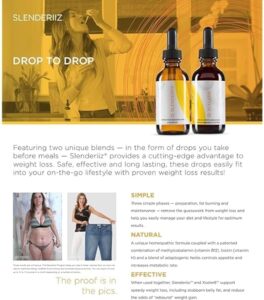
Key Takeaways
-
Sodium polyacrylate is a super-absorbent polymer that locks in moisture, leading to deeply hydrated skin.
-
This ingredient enhances the texture and efficacy of skincare products, making them more enjoyable to use.
-
By forming a protective barrier, it helps to shield the skin from environmental pollutants and prevent moisture loss.
-
Understanding the safe use of sodium polyacrylate in skincare is crucial for maintaining skin health.
-
Choosing the right products containing sodium polyacrylate can elevate your skincare routine for radiant results.
My favorite Holistic Skincare Products
Arbonne, a leader in the health and wellness industry for over 40 years, remains dedicated to clean beauty and sustainability, prioritizing people and the planet in every decision as evidenced by their Certified B Corporation status.
You can buy Arbonne Skincare Products here.
Unlocking the Secrets of Sodium Polyacrylate
Have you ever wondered what makes your favorite moisturizer so hydrating? Or why that face mask leaves your skin feeling plump and refreshed for hours on end? The answer might just be a little-known ingredient called sodium polyacrylate. It’s a tiny hero in the world of skincare, working behind the scenes to ensure your skin stays quenched and happy.
What is Sodium Polyacrylate?
Sodium polyacrylate, also known as waterlock, is a super-absorbent polymer that’s often found in personal care products. It’s kind of like a microscopic sponge; it can absorb and hold many times its weight in water, which is why it’s used in products designed to keep your skin or hair well-hydrated. Its superpower lies in its ability to create a gel-like substance when mixed with water, which helps to keep moisture locked into your skin.
But it’s not just about locking in water. This ingredient has a knack for making your skincare feel luxurious too. Because of its gel-forming abilities, it can transform the texture of creams and lotions, making them glide on smoothly for that oh-so-satisfying application.
Is Sodium Polyacrylate Safe?
When it comes to skincare, safety is always a top priority. So, it’s natural to wonder if this moisture magnet is safe to slather on your skin. The good news is, sodium polyacrylate is generally considered safe for use in personal care products. It’s been reviewed by cosmetic ingredient review panels and found to be non-irritating and non-toxic when used as intended. However, as with any skincare ingredient, it’s always best to patch test first, especially if you have sensitive skin.
Why it’s a Skincare Game Changer
Now, you might think, “Well, moisture is great and all, but what else can sodium polyacrylate do for my skin?” Here’s where things get interesting. Besides its hydrating prowess, it can also enhance the performance of other skincare ingredients. It helps to create a uniform texture in products, which means that the goodies like vitamins and antioxidants are evenly distributed and absorbed by your skin. So, it’s not just a one-trick pony; it’s more like a skincare sidekick, boosting the powers of other ingredients.
Deep Dive into Hydration Benefits
Let’s talk hydration. We all know it’s the cornerstone of healthy, glowing skin. Without enough moisture, skin can look dull, flaky, and more prone to showing fine lines. Enter sodium polyacrylate, the hydration hero. It has the ability to hold onto water molecules fiercely, ensuring that your skin remains hydrated for longer periods.

Sodium polyacrylate
A super-absorbent polymer capable of absorbing 100 to 1000 times its mass in water.
More
Chemical formula
[−CH~2~−CH(CO~2~Na)−]~n~
Common names
ACR, ASAP, PAAS, waterlock
Applications
Used in consumer products like bread, juice, and ice cream
|
Property/Benefit |
Description |
|---|---|
|
Absorbent Properties |
Sodium polyacrylate is known for its excellent water-absorbent properties, making it ideal for use in products like disposable diapers, feminine hygiene products, and medical applications . It can absorb water almost 200 to 300 times its mass |
|
Safety |
Sodium polyacrylate is considered safe for use in personal care products and is approved by regulatory bodies. It is non-toxic and poses no significant health hazards . However, it should be handled carefully to avoid potential dangers like slippery surfaces when spilled in water or clogging of drainage systems if disposed of improperly |
|
Skincare Benefits |
In skincare products, sodium polyacrylate functions as a thickening agent, texture enhancer, film-forming agent, and emulsion stabilizer. It helps improve the sensory feel and stability of products, making them smooth and pleasant to use |
|
Industrial Applications |
Sodium polyacrylate is used in various industries such as industrial cleaning, dishwashing products, washing detergents, vehicle cleaning, and care. It acts as a latex and food thickener, pigment dispersant, fabric sizing agent, and more |
|
Agriculture |
In agriculture, sodium polyacrylate is used to help plants retain moisture in the soil. It serves as a water reservoir for plants and aids in increasing moisture availability in rocky slopes or sandy soil |
|
Environmental Impact |
While sodium polyacrylate is non-toxic and safe for humans, it is considered non-biodegradable and may cause salinization of soil if used in large quantities. Its impact on the environment is still under study |
The Science of Moisture Absorption
Imagine your skin as a desert, parched and in desperate need of rain. Sodium polyacrylate is like the rainclouds rolling in, providing a downpour of hydration. But how does it work? It’s all thanks to its molecular structure, which contains a network of cross-linked polymers. These polymers swell up when they come into contact with water, creating a gel that doesn’t just sit on your skin’s surface—it sinks in, bringing moisture deep into the outer layers of your skin.
Long-Lasting Hydration for Your Skin
What sets sodium polyacrylate apart from other hydrating ingredients is its staying power. It’s not just a quick splash of moisture that evaporates after a few minutes. No, this polymer keeps holding onto water, keeping your skin moisturized throughout the day. This means you can go about your day, whether it’s braving the cold winds or basking in the office air conditioning, knowing that your skin is well taken care of with benefits for hydration.
And the best part? This extended hydration comes with a bonus. When your skin is well-hydrated, it appears plumper and more radiant. Fine lines seem to take a back seat, and the overall texture of your skin improves. It’s like giving your skin a drink of water when it’s thirsty, and who doesn’t love the look and feel of quenched skin?
Creating Smoother, Softer Skin
When it comes to feeling good in your skin, texture matters. Smooth, soft skin is something we all strive for, and sodium polyacrylate can be a secret weapon in achieving that. Because it forms that gel-like substance I mentioned earlier, it helps products to spread evenly, avoiding those pesky clumps or pills that can occur with some skincare items. This even spread means a smoother application, which in turn, helps your skin feel like silk.
Besides that, the film-forming properties of sodium polyacrylate can also play a role in smoothing the skin’s surface. Think of it as a gentle veil that rests on the skin, providing a subtle, tactile improvement. Your skin not only gets the hydration it craves but also an instant boost in texture, resulting in a softness you can see and feel immediately after use.
How This Ingredient Strengthens Product Efficacy
There’s more to sodium polyacrylate than meets the eye. It doesn’t just improve skin hydration and texture; it also bolsters the effectiveness of the entire skincare product. Here’s why: when sodium polyacrylate swells up with water, it creates a network that can entrap other ingredients, releasing them slowly over time. This controlled release means that active ingredients can continue to work their magic on your skin long after you’ve applied the product.
Moreover, the stabilizing effect of sodium polyacrylate ensures that the product’s formulation remains consistent from the first use to the last. This means that the efficacy of the product doesn’t degrade over time, which is crucial for maintaining the integrity of the active ingredients.
So, not only does sodium polyacrylate enhance your immediate skincare experience, but it also ensures that the beneficial compounds in your products are working optimally. This means better results for your skin, both in the short and long term.
-
Improves product texture for smoother application
-
Forms a protective film to enhance skin surface
-
Stabilizes skincare formulations for consistent efficacy
-
Facilitates controlled release of active ingredients
Ensuring Safety in Your Skincare Routine
Safety is paramount in skincare. While sodium polyacrylate is considered safe for cosmetic use, it’s always smart to stay informed and cautious. It’s not common, but like with any ingredient, there’s a chance of sensitivity or reaction, particularly if you have specific skin conditions or allergies.
Most importantly, you should always follow the usage instructions on your skincare products. Overuse of any ingredient can lead to skin irritation or other issues, so stick to the recommended amounts.
Understanding Potential Side Effects
Although rare, potential side effects from sodium polyacrylate can include mild skin irritation or allergic reactions. These reactions are often the result of overuse or individual sensitivity. If you experience any redness, itching, or discomfort after using a product containing sodium polyacrylate, it’s best to discontinue use and consult with a dermatologist.
Safe Practices for Using Products with Sodium Polyacrylate
To safely incorporate products with sodium polyacrylate into your routine, consider these tips:
-
Start by applying a small amount of the product to a discreet area of skin to conduct a patch test.
-
Wait 24 to 48 hours to ensure there is no adverse reaction before applying it more broadly.
-
Use products as directed, and don’t exceed the recommended frequency of use.
-
Be aware of the other ingredients in your skincare products to avoid potential interactions.
If you’re ever unsure about a product or ingredient, don’t hesitate to reach out to a skincare professional. They can provide personalized advice based on your skin’s unique needs.
Perfecting Your Skincare Routine with Sodium Polyacrylate
Integrating sodium polyacrylate into your skincare routine can make a world of difference in your skin’s hydration levels. But how do you choose the right products, and how should you use them for maximum benefit?
Choosing the Right Products
When shopping for skincare, look for products that list sodium polyacrylate as an ingredient if you’re aiming for intense hydration and improved product texture. You’ll commonly find it in moisturizers, serums, and hydrating masks. Make sure to check the label for any additional ingredients that you might be sensitive to, and as always, opt for products from reputable brands that prioritize safety and efficacy.
Integrating into Daily Skincare
Using products with sodium polyacrylate is straightforward. Apply them as you would any other skincare product, paying attention to the order of application. Typically, you’d cleanse your skin, apply any toners or serums, and then follow up with your sodium polyacrylate-containing moisturizer or mask. This order helps to ensure that your skin reaps all the hydrating benefits.
Remember, hydration is the foundation of a radiant complexion. So, by making sodium polyacrylate a staple in your skincare arsenal, you’re setting the stage for skin that not only feels good but looks luminous too.
FAQ
Can Sodium Polyacrylate Cause Allergic Reactions?
As with any skincare ingredient, there’s always a chance of an allergic reaction, although it’s quite rare with sodium polyacrylate. This polymer is widely used because it’s generally gentle and non-irritating. However, everyone’s skin is unique, and what works for one person might not work for another.
If you’re concerned about allergies, the best approach is to do a patch test before using the product extensively. Apply a small amount to your inner forearm, cover it with a bandage, and wait 24 hours to see if there’s a reaction. If your skin becomes red, itchy, or inflamed, it’s best to avoid products containing this ingredient.
Always listen to your skin. If you notice any signs of discomfort or an allergic reaction, discontinue use immediately and consult a healthcare provider if necessary.
Is Sodium Polyacrylate Safe for Acne-Prone Skin?
Sodium polyacrylate is typically non-comedogenic, which means it shouldn’t clog pores or cause breakouts. In fact, because it helps maintain hydration, it can actually be beneficial for acne-prone skin, which often suffers from a damaged moisture barrier.
However, it’s important to remember that acne-prone skin can be sensitive, and the overall formulation of the product matters. Make sure the rest of the ingredients are suitable for your skin type. When in doubt, consult with a dermatologist to find the most appropriate products for your skincare needs.
How Often Should I Use Products Containing Sodium Polyacrylate?
The frequency of use will depend on the specific product and your skin’s needs. For daily moisturizers, you can use them twice a day as part of your morning and evening routines. For more intensive hydrating treatments like masks, once or twice a week should suffice.
Always refer to the product’s instructions for the recommended usage, and adjust based on how your skin responds. Overuse can lead to product build-up and potential irritation, so it’s crucial to find the right balance for your skin.
Can I Use Sodium Polyacrylate with Other Skincare Ingredients?
Generally speaking, sodium polyacrylate plays well with other skincare ingredients. It’s a versatile polymer that’s included in formulations to improve texture and efficacy, and it doesn’t typically interfere with other active ingredients.
For example, sodium polyacrylate can be found in formulations alongside hyaluronic acid, peptides, and antioxidants without any issues. It’s all about enhancing the product’s performance and your skin’s hydration.
However, if you’re using prescription skincare or have sensitive skin, it’s always a good idea to check with a healthcare professional to ensure all the ingredients in your regimen are compatible.
How Does Sodium Polyacrylate Compare to Hyaluronic Acid in Skincare?
Both sodium polyacrylate and hyaluronic acid are known for their hydrating properties, but they work in slightly different ways. Hyaluronic acid is a naturally occurring substance in our skin that can attract and hold water. It’s celebrated for its ability to plump the skin and reduce the appearance of fine lines and wrinkles.
Sodium polyacrylate, on the other hand, is a synthetic polymer that can absorb large amounts of water and create a gel-like texture in skincare products. It’s particularly good at locking in moisture and enhancing the stability of a product.
-
Hyaluronic Acid: Naturally derived, great for plumping and hydrating the skin.
-
Sodium Polyacrylate: Synthetic, excellent for locking in moisture and improving product texture.
Using products that contain both ingredients can provide a powerhouse of hydration, taking advantage of the unique benefits each has to offer. It’s all about layering the right ingredients to achieve a hydrated, radiant complexion.
In the world of skincare, hydration is key, and sodium polyacrylate is a fantastic ally in keeping your skin looking its best. Remember, the right ingredients can make all the difference, and with sodium polyacrylate, you’re well on your way to a happier, healthier skin barrier. So, embrace the science of skincare and let this unsung hero bring out the best in your beauty routine.



